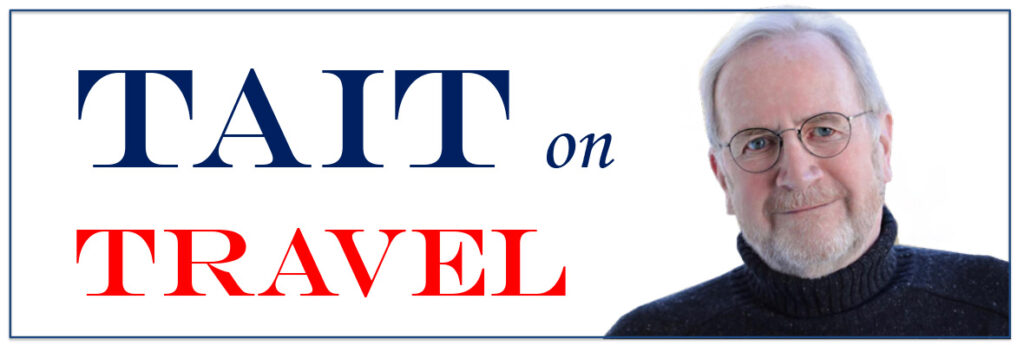Once upon a time airlines were just, well, “airlines” the only distinction being whether they were charter or scheduled: Times have changed. In recent years the travelling public has been subjected to a confusing plethora (since ‘The Three Amigos’ I’ve loved sneaking in this word) of airline epithets.
Recent media coverage of JetBlue’s new JFK-YVR service, saw the US carrier variously described as, ‘discount’, ‘low cost’, and ‘low fare’ none of which are strictly accurate – but more on this later.
In simpler times, Canadians had a choice of Air Canada (a Crown Corporation until 1988) or CP Air, along with an ever-changing supporting cast of regional types like Quebecair, Nordair, Pacific Western (affectionately known as ‘P-Dub’) and charter operators such as the much-loved Wardair. Of course, over time, with the notable exception of AC (notwithstanding its 2003 brush with bankruptcy), every one of these would either fail or be ‘mergered’ into obscurity.
In the seventies, led by the dynamic duo of Freddie and Herb, this status quo of generally over-priced scheduled and slightly less expensive alternate services, would start to evolve. While Sir Freddie Laker shook up the transatlantic market with his no-frills ‘Skytrain’ service, Herb Kelleher’s Southwest, became the first truly low fare/low-cost domestic carrier in the US and would go on to record 47 consecutive years of operating profits before Covid reared its ugly head. In the early nineties, inspired by Southwest’s runaway success, Irish carrier Ryanair’s Michael O’Leary replicated the model in Europe: It should be noted that all three shared the same simple business model of a single aircraft type (the Boeing 737) and one service class. In Calgary, this looming industry reformation didn’t go unnoticed by Tim Morgan, Don Bell and friends and, in 1994, WestJet was formed (initially) following the Southwest model pretty much to the tee.
But let’s fast forward to today’s aviation picture which, for the poor consumer, has become a strange mix of alphabet soup misnomers and once low-cost airlines losing the plot but retaining the original handle.
The most popular descriptors are LCC (Low Cost Carrier) and ULCC (Ultra Low Cost Carrier). Now the big question with this is, does that mean the carrier has low operating costs, or that it offers low-cost tickets to the passenger? While the two should be joined at the hip – the flying public automatically assumes the latter – this is not always the case. Over the years, several ‘airline-within-an-airline’ ventures like Delta’s ‘Song’, United’s ‘Ted’ and now AC’s ‘Rouge’ have borne this out. For instance, right out of the box, on some routes like Hamilton-Calgary, Rouge was offering higher fares than the mothership out of YYZ to YYC.
The other problem with such ‘LC’ designations is that what was true out of the gate, is seldom still the case after several years: WestJet is a classic example of this. Unlike Ryanair, which has scrupulously adhered to its original rigid cost-avoidance model. WestJet, in the fervid pursuit of growth, has drastically strayed from its roots. As it aspires to compete with AC on the Atlantic, the Calgary carrier now has two aircraft types in its mainline fleet. But the WestJet Group also has two subset operations, with ULCC Swoop and the regional Encore with a large fleet of Q400 turboprops. Mix in various unions to the growing operational complexity and today’s Westjet is neither low-cost nor low fare. Even the inventor of the space, Southwest, can no longer be described as truly ‘low fare’ – even if its costs are more tightly controlled than most of its one-time imitators. Perhaps ‘Neo-Legacy’ or ‘SLC’ (Slightly Lower Cost) would be more appropriate terms.
I fully subscribe to the LCC à la carte model whereby you pay only for those things you value, unlike traditional, ‘full service’ prix fixe pricing where you pay for all the “free” stuff whether you use it or not. That said, ULCC pricing now has a lot in common with automotive sticker-shock. Just ask an auto dealership to find you a single car at that “From $29,900” advertised base price, without the sticker-full of factory-installed options. The aviation equivalent (Southwest excepted) to buying that advertised fare, is flying without a single piece of checked or carry-on baggage, being the last to board, with no advanced seat selection getting stuffed in a back row middle seat and going without any form of ‘Buy on Board’ sustenance. Several world ‘low cost’ airlines are already generating 50%+ of revenues from ancillary products, which pretty much says it all.
While it’s 15 years or more since the CTA ruled that airlines must advertise “zipped-up fares” that include all applicable taxes, there may now be a good case for a caveat emptor asterisk stating something like, “Plus Optional Ancillary Fees.” For instance, randomly searching one Canadian self-proclaimed ULCC’s website, I found a very competitive fare (including taxes) of $289. The next click through however took me to a screen displaying two ‘bundles’ of ancillaries: The first was a (pre check-marked) $55 and the second (unchecked) was $75. IF you know what’s going on, you can of course opt out of the $55 by simply unchecking the first box, but to the rookie flyers who make up a significant percentage of LCC buyers, it looks more like an ‘either/or’ because of the first box being prechecked.
Perhaps it’s time for a new re-zipped catch-all airline designation of ‘DBSBTAF’ as in, ‘Don’t Be Suckered by the Advertised Fare’.

